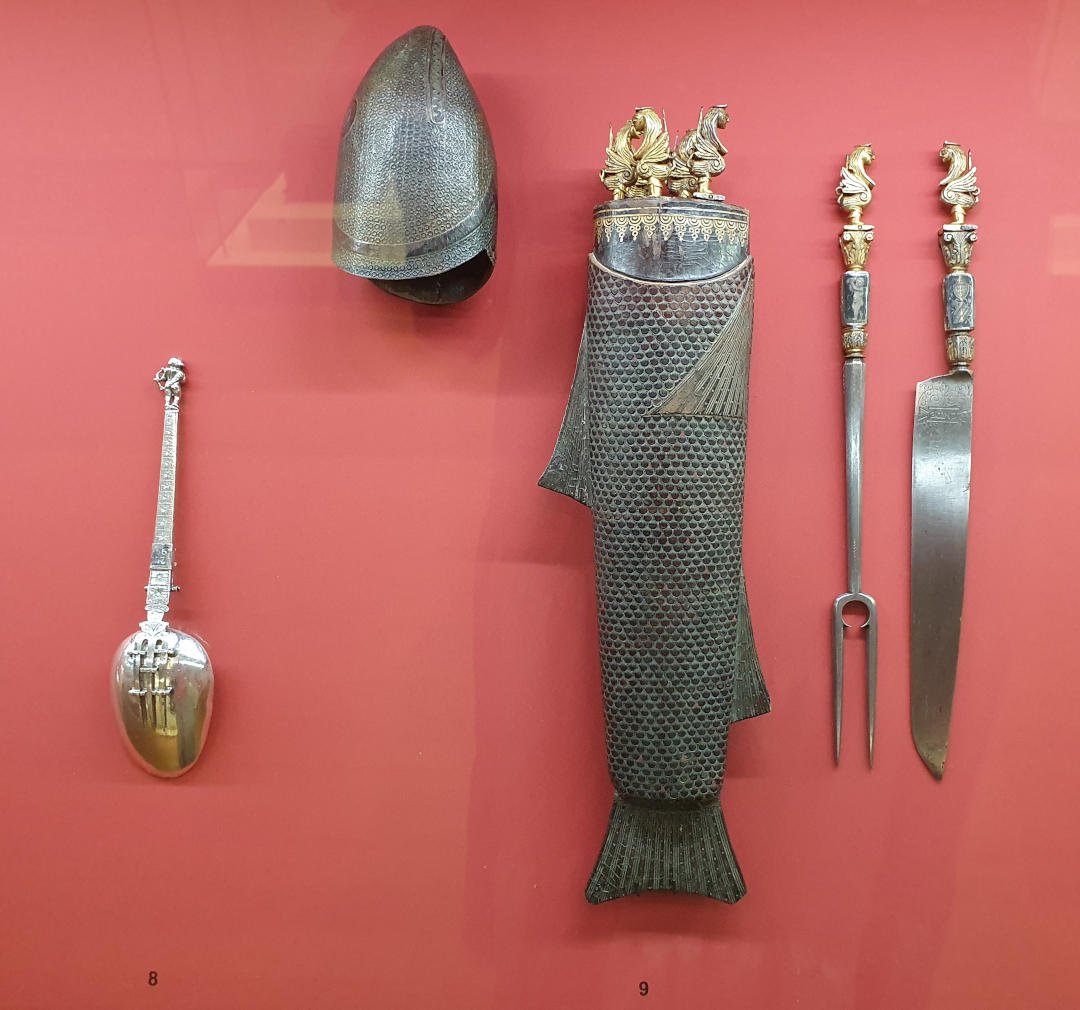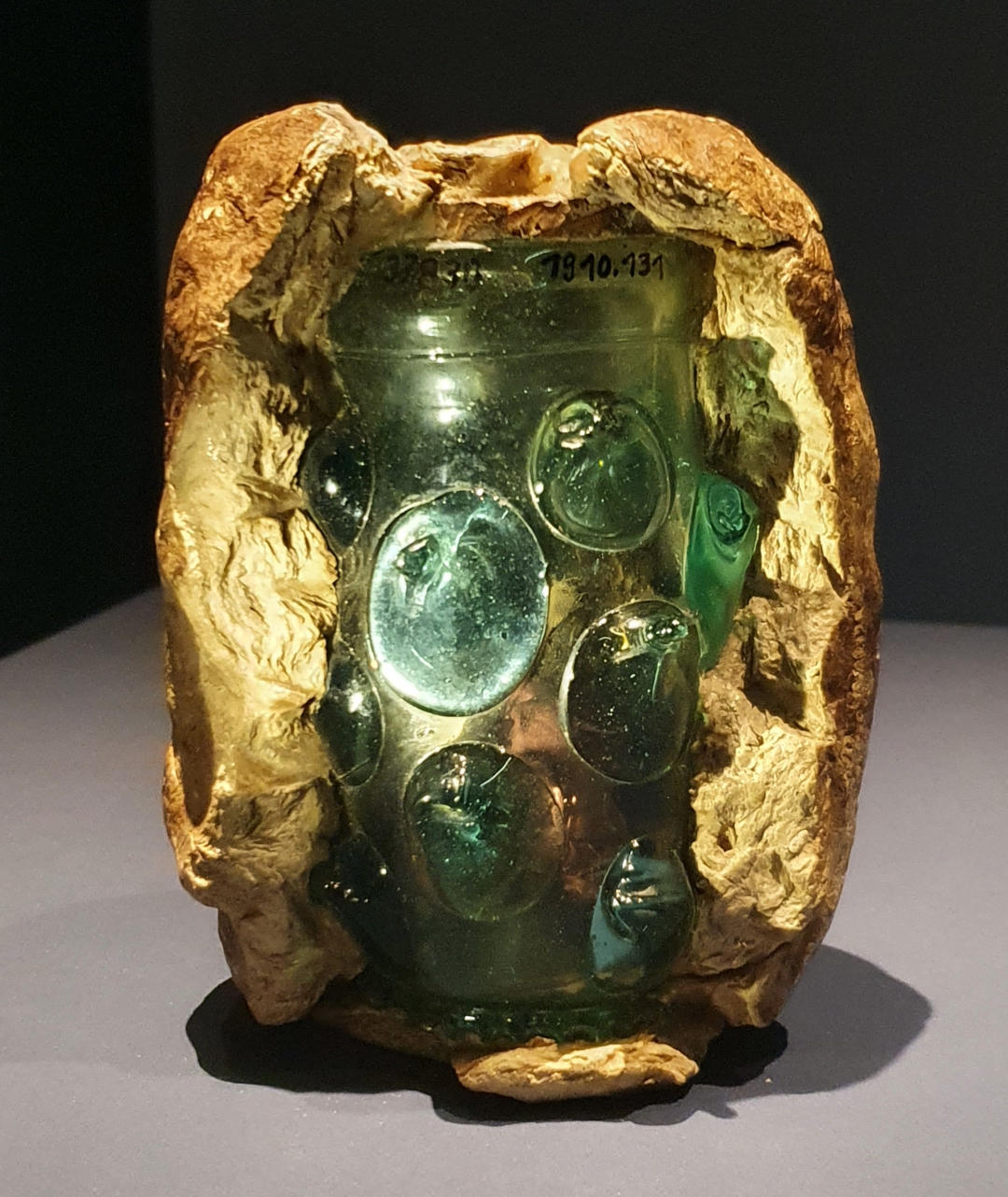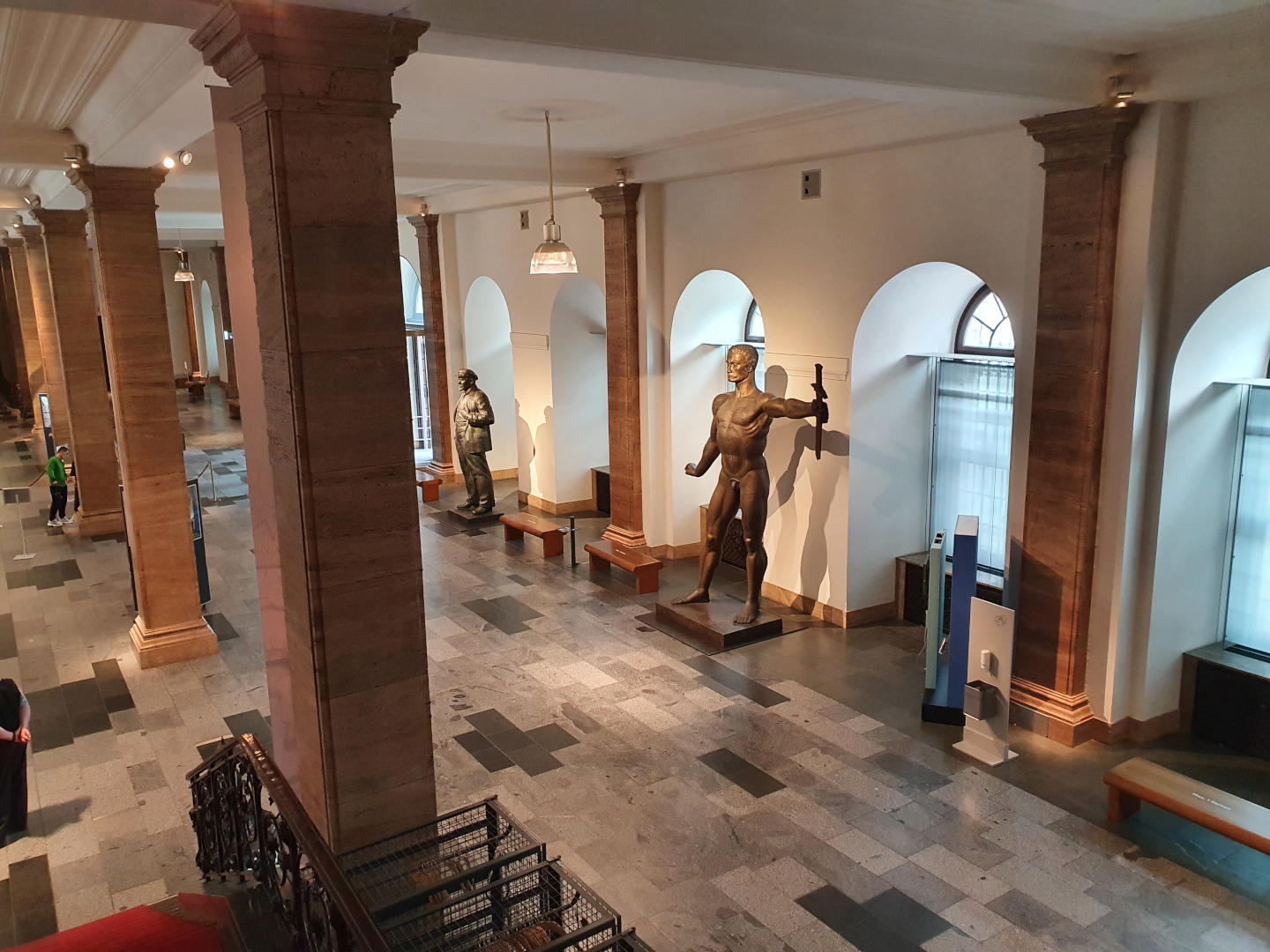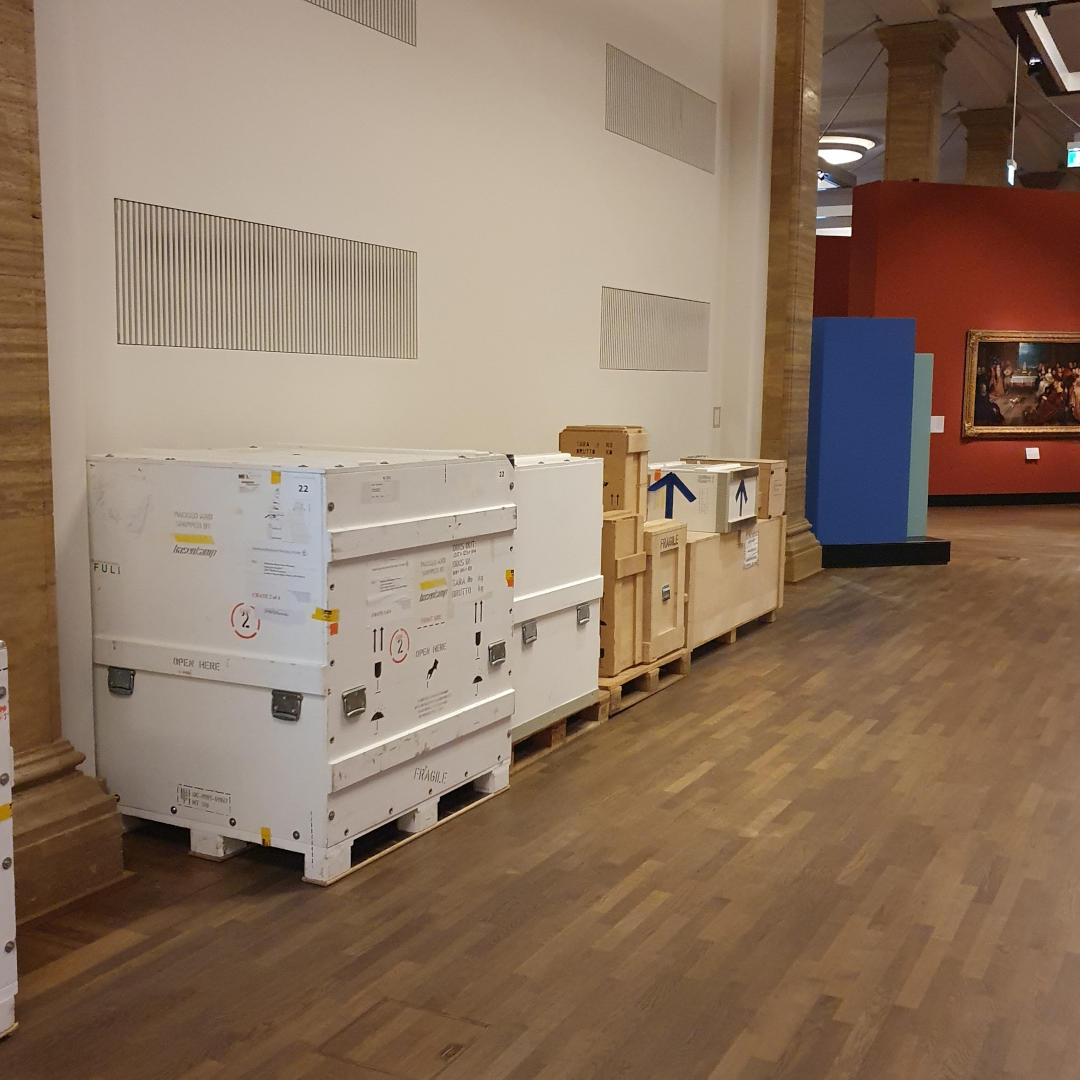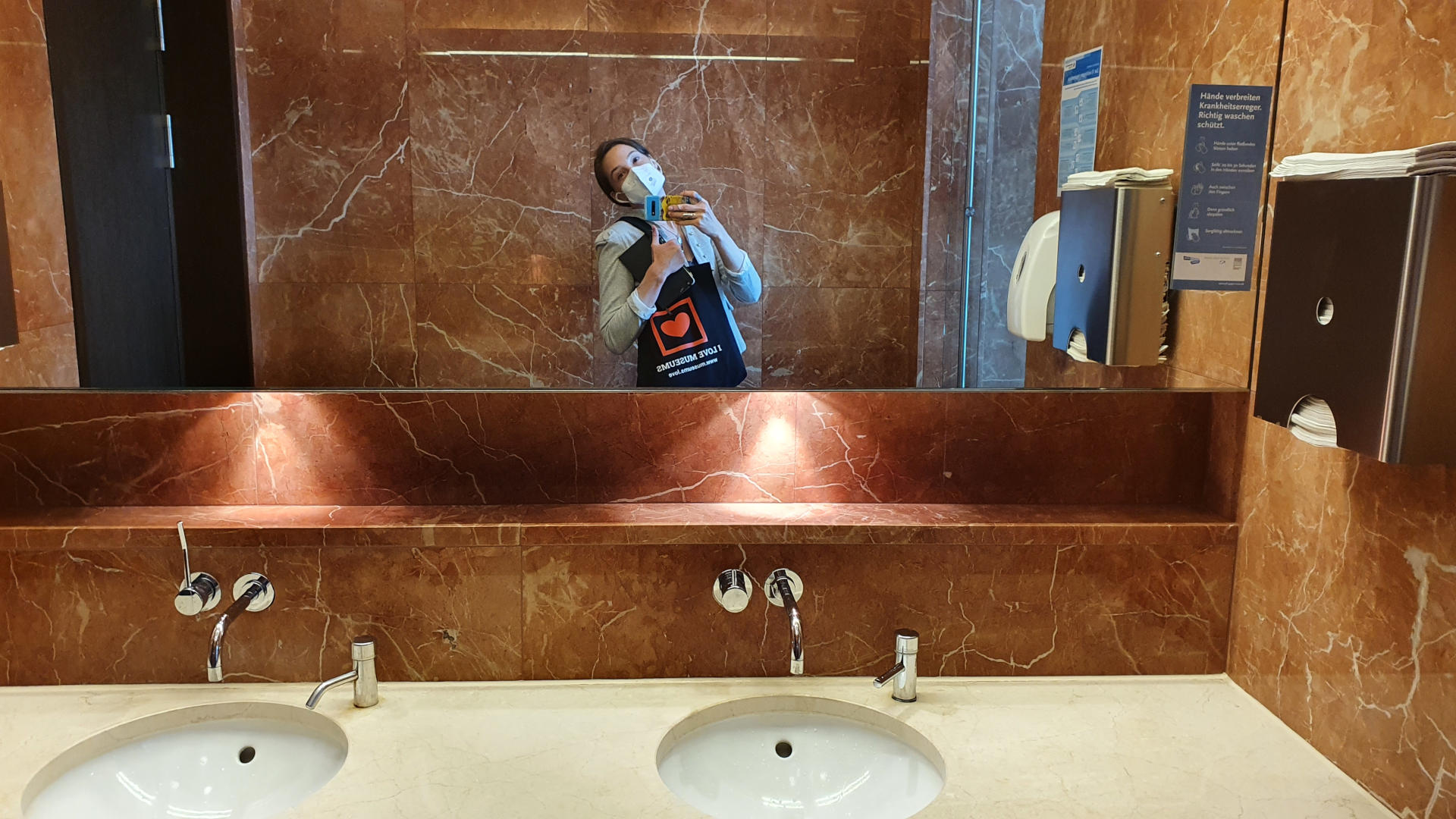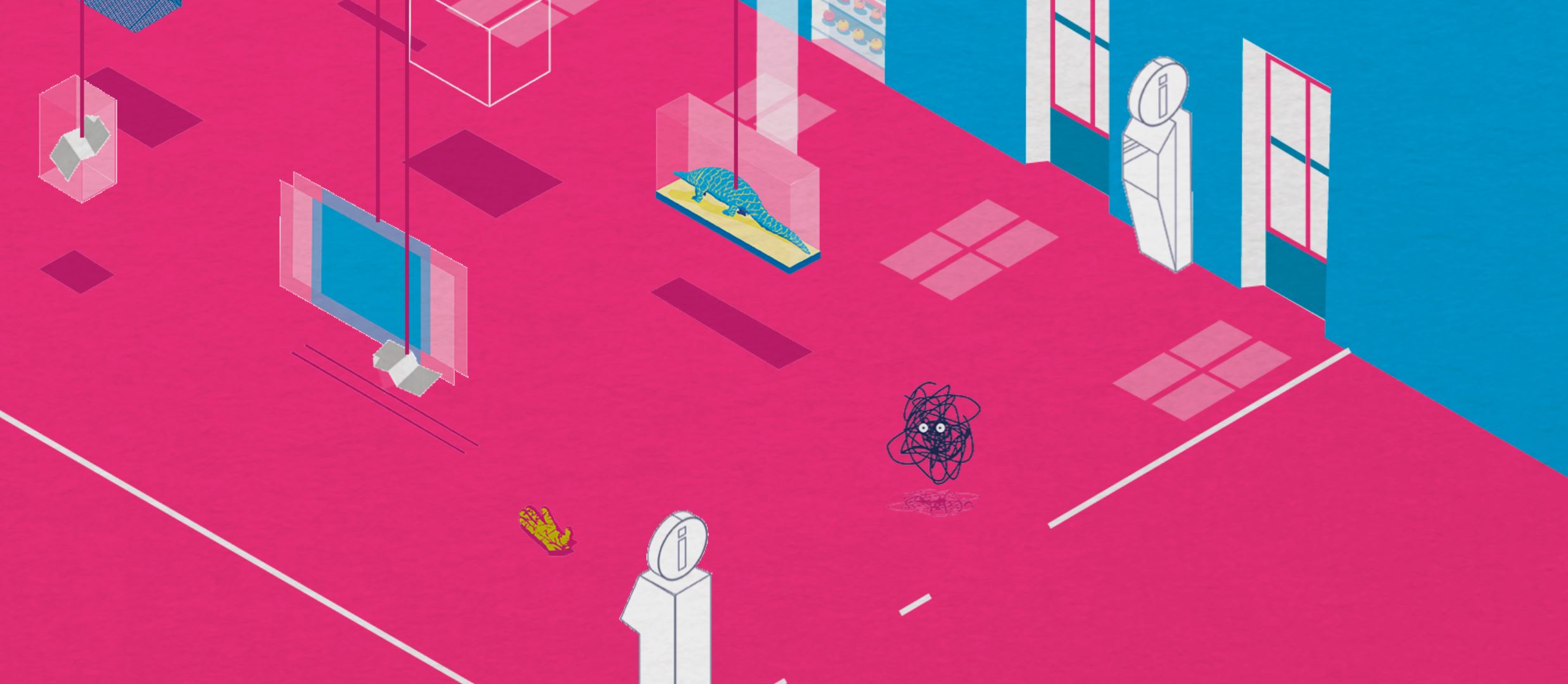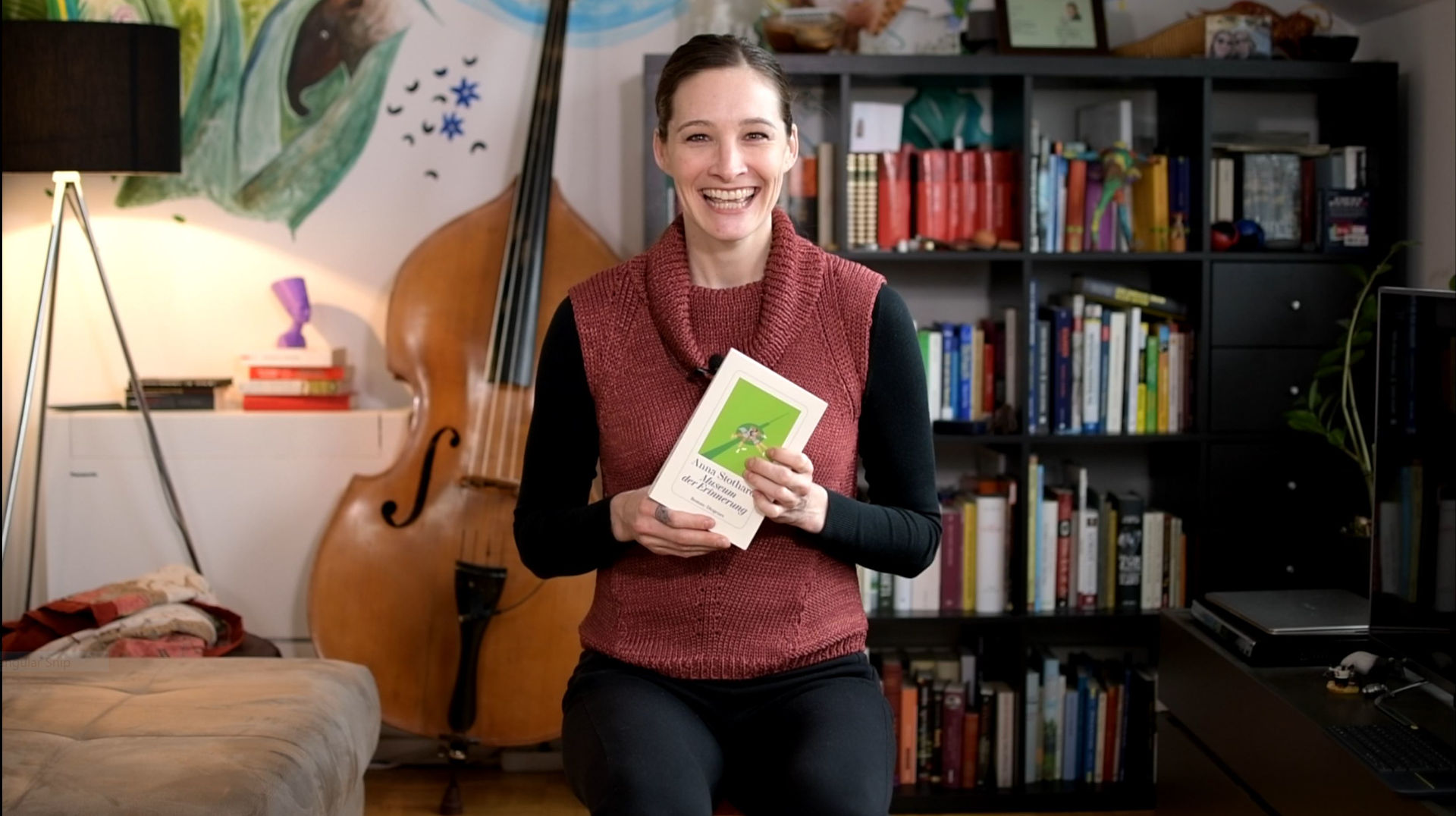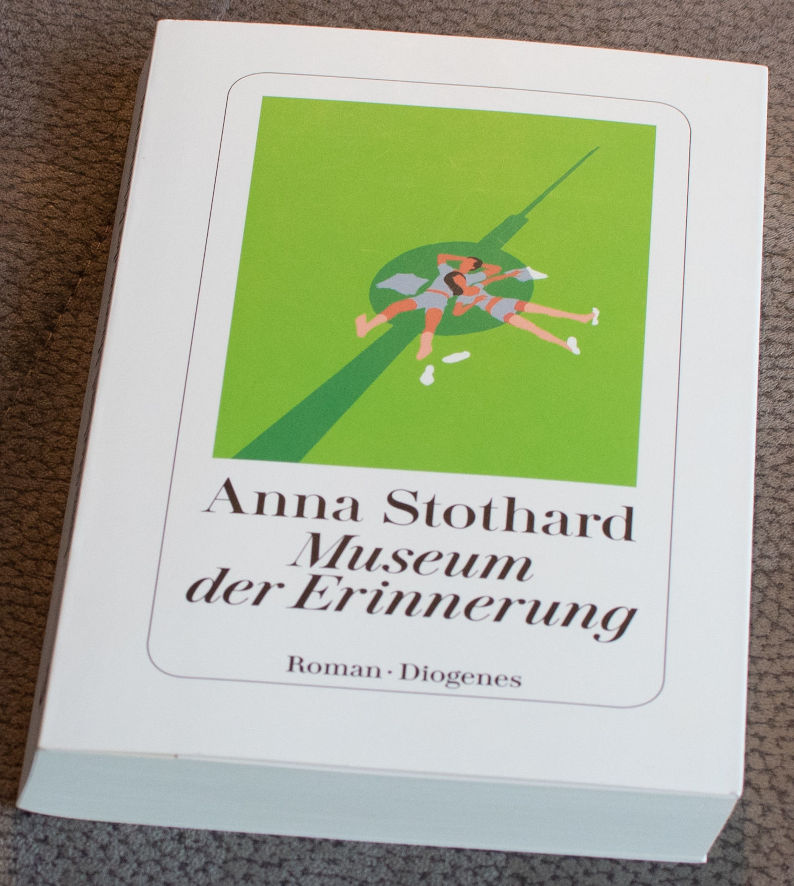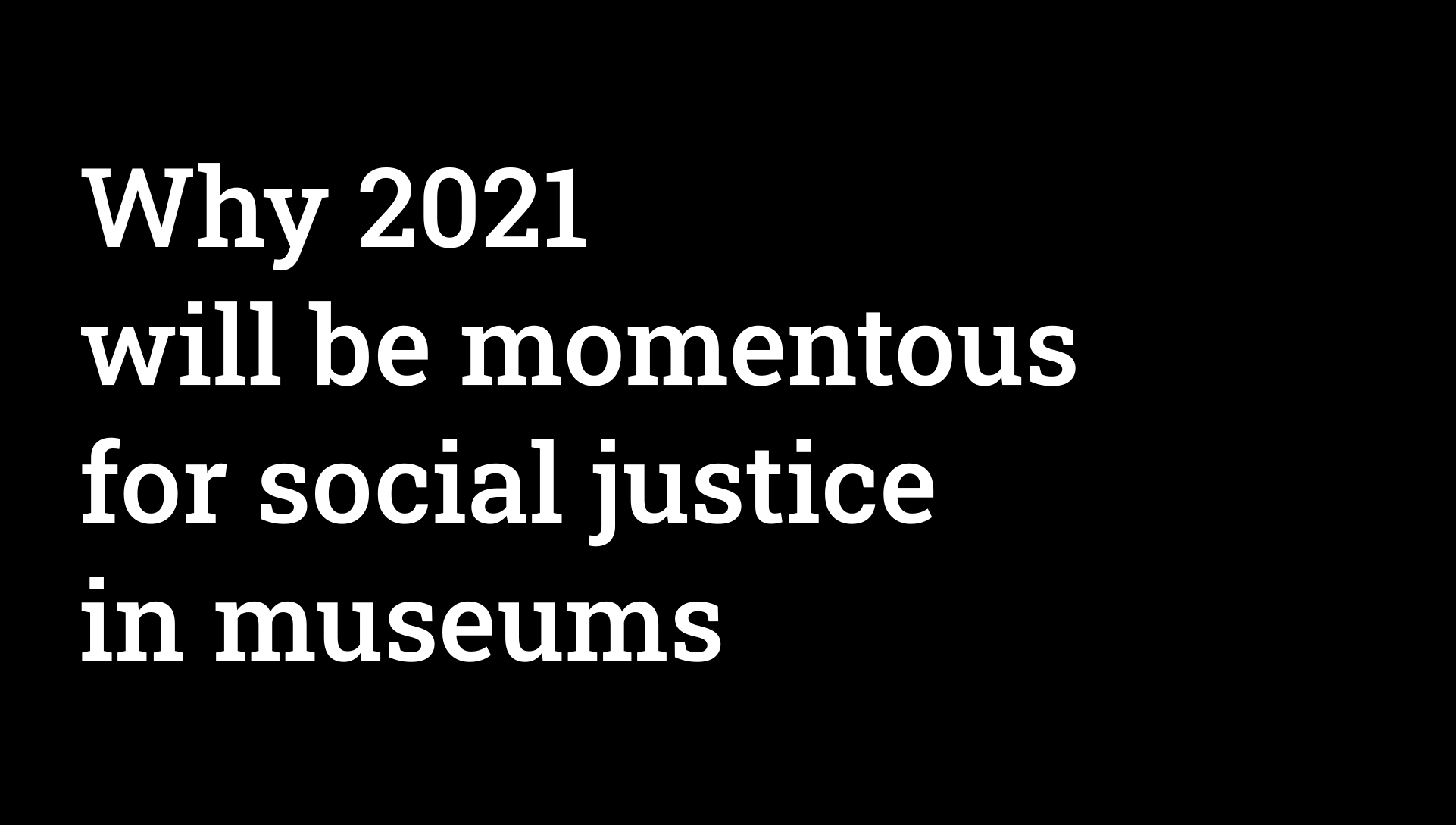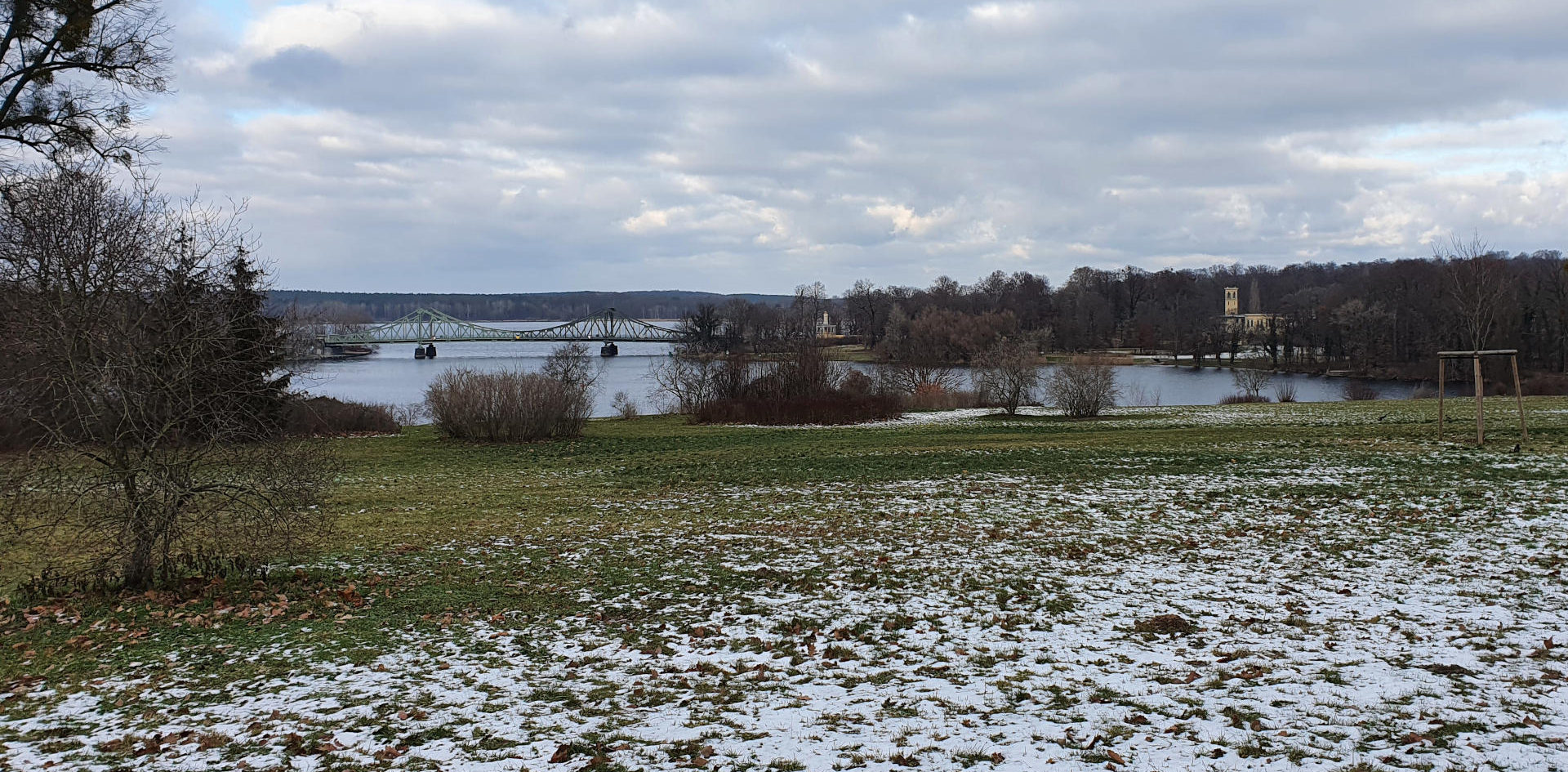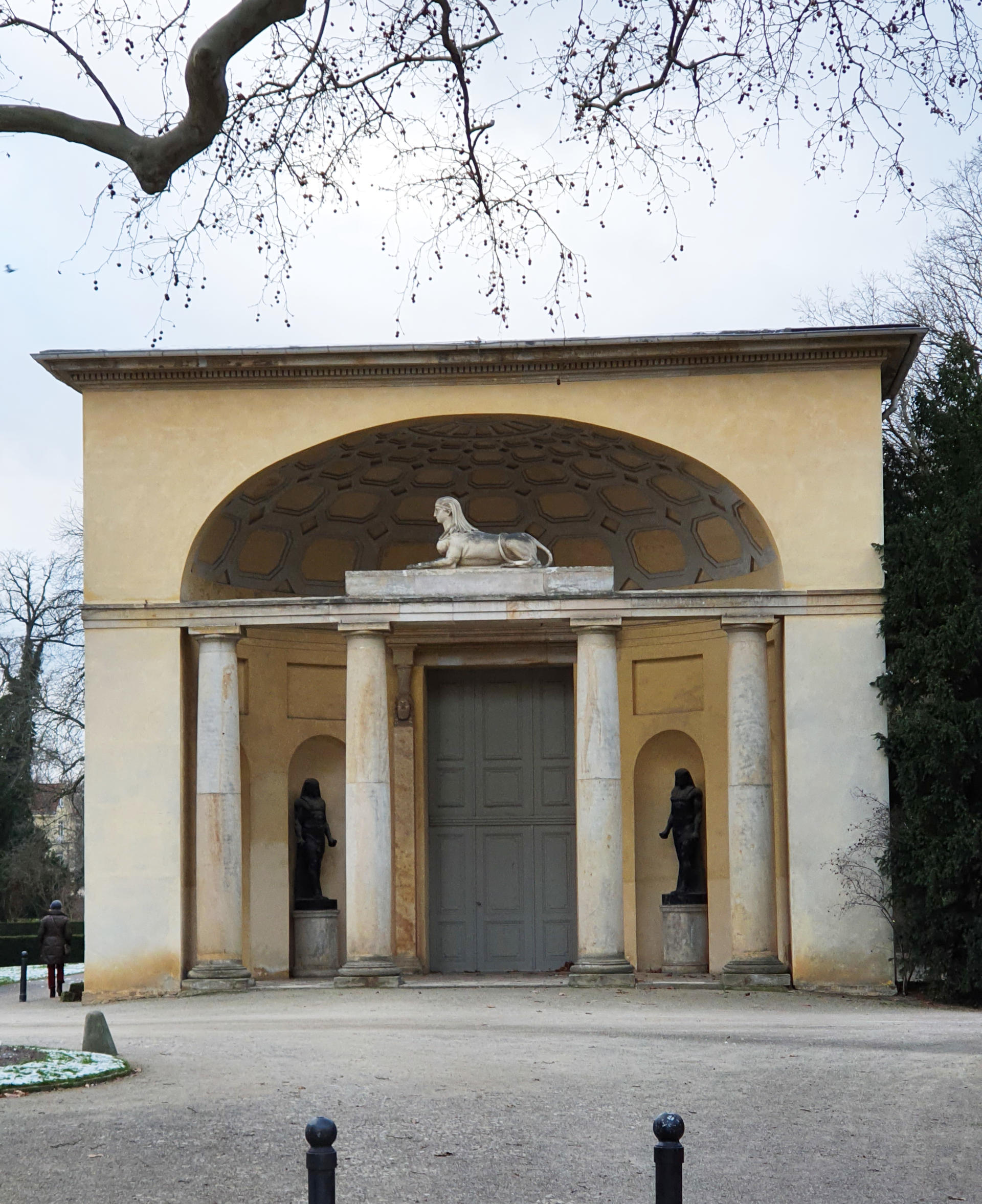Field Trip: Leipzig's GRASSI Museum of Applied Arts (Angewandte Kunst)
This week I took a field trip to Leipzig to see the GRASSI Museum of Applied Arts (Museum für angewandte Kunst). It was a lovely outing. The museum has beautiful grounds with a relaxing atmosphere, the personnel was wonderfully friendly, and the museum objects were truly astounding. I found a lot of new favorites among them! (Some are below and more will be on Instagram.)
Although I really enjoyed my time in the museum, I have some reservations about the way the objects are shown. To explain this will require a teeny-weeny art historical introduction. Yay learning!
A teeny-weeny introduction
The term “applied arts,” included in the name of this museum and many others, refers to objects that were “applied” or “used” in some way, as opposed to objects considered “fine art” like sculpture and painting, supposedly with no use other than bein’ purdy. This distinction was made by early art historians, but is not terribly logical… If you think about it, you “use” a painting for some purpose (aesthetic enjoyment, edification, making money, showing off) just as you use a painted jewelry box to hold jewelry, as well as for aesthetic enjoyment. And how about cloth, usually classified as applied art rather than art? Yet is a lace collar really “applied”? Does it function in some way other than the visual? Hardly, I would say. “Use” is more of a spectrum than a clear all-or-nothing division.
We could resolve this illogical system of definitions – and its inherent hierarchy, with fine arts at the top and applied arts below – by renaming all of this stuff “material culture.” Material because we can touch it, and culture because it’s made by humans according to certain learned traditions. Voila, problem solved!
So what about GRASSI?
Of course, the GRASSI Museum inherited its name from the longstanding tradition that put applied arts into their own category, and that’s fine. What struck me as less fine is that the museum largely ignores the very applied-ness of these arts. If we’re going to have a museum of applied arts, I’d like at least to see how these arts were applied! To neglect that seems like an attempt to put applied arts into the “fine arts” category in which no “use” is expected. Which isn’t even true for fine arts, let alone applied arts (since artworks have always been instruments of power, economics, etc. etc.).
One example is this beautiful jug from an Italian Renaissance pharmacy. Apparently it held “agua de cicorea” – that’s chicory water! The label on the case repeats the letters, but doesn’t translate them or tell us what medicinal uses chicory water had (here’s a study with a great list by country).
Until the Renaissance, a spoon and knife were not set on the table for dining, but brought by every individual for their own use. This set of utensils with a carrying case – in the shape of a fish! – belonged to none other than the great plutocrat patron of Florence, Cosimo de Medici. How amazing is that: the most powerful man in Florence arrived at banquets carrying a fish case? This could have been played up more.
This object is left even more mysterious. It looks super cool, but – what is it?? The label called it an altar sepulcher, but I think I know what both of those words mean and don’t see how either could refer to a glass encased in stone (?). Hmmm.
Glossing over how objects were used allows a toilet bowl to stand in a 19th-century living room display. The common factor is the era rather than the use. The john is elaborately painted and includes the word “salute” or “good health” above the water pipe for flushing. Ha! I think a lot of visitors would find this hilarious and instructive, if the object had a more focused display of its own.
Saving the best for last
The best part of the museum was, for me, the extraordinarily friendly staff and the gorgeous museum grounds. The personnel was eager to help me on my visit, and did so with a friendliness and a smile that I so often miss in Berlin museums. Deck chairs set out in a sunny spot on the grass are another wonderful invitation to the visitors, and I definitely took advantage.
Have you been to a museum of applied art? Share your thoughts in the comments below!
Last Look in Berlin's German History Museum until 2025
Renovation after 15 years
When I discovered that Berlin’s enormous museum of German history, the Deutsches Historisches Museum, was going to close its permanent exhibition for a 5-year renovation, I urgently wanted to get in there one last time. This exhibition has been around for 15 years and contains some of my favorite museum objects of all time! To show them to you and reflect on the way this exhibition tells stories, I made a video that you can watch here. In it I also give you a sneak peek into the future version of the exhibition and how it will be different.
The special exhibitions in the rear building of the museum will remain open, so keep visiting those for your history fix until 2025!
Although I went into the museum with 2 other favorite objects in mind, this one quickly joined the list. It’s a mechanical prosthetic arm from 500 years ago! You can learn more about it in my video.
Museum Lovers don’t just love objects and stories: they also appreciate good visitor services. These are the most elegant museum bathrooms in Berlin!
Did you get to visit this DHM exhibition? Or do you know about even better museum bathrooms?? Share in the comments below!
Free first Sundays in Berlin museums - Summer 2021
Good news for museum lovers in Berlin!
Some good news in the Berlin museum world has emerged: starting this summer, around 60 Berlin museums will be free on the first Sunday of every month for the next two years (announced in this German newspaper article). The initiative was originally planned to begin last year, but due to the pandemic it was pushed back from April 2020 to July 2021. That means that the start of the free-Sunday season is in just over three weeks, on July 4, 2021.
Which museums are taking part?
The free-Sunday initiative includes the state-owned museums, which include the heavy-hitters on Museum Island (Bode Museum, Pergamon Museum, Neues Museum, Altes Museum, Alte Nationalgalerie / Old National Gallery). This is probably where most people, especially tourists, will take advantage of the offer. Other state museums like the contemporary art collections in Hamburger Bahnhof are also included.
In addition, many museums outside the state network are taking part. The German Historical Museum is a big one, the Georg Kolbe Museum a small one. In between are lots of others! The Jewish Museum, the Museum of Things, the reconstructed medieval village at Museumsdorf Düppel… You can find a full list here.
Missing information
A number of important questions remain, however. Foremost in my mind is: Will the new museums in the Humboldt Forum be included? I suspect NOT. There is no mention of the HUF in the information that is currently available.
This is related to a big problem of communication plaguing this happy news. The state museums offer no information on this new initiative! Nor does the otherwise very useful Museumsportal Berlin – which does however have an ongoing list of Berlin museums with year-round free admission. The news coming out about the Humboldt Forum partial opening next month has a long and complicated list of what exhibitions will be free or paid, and for how long, but that is hardly a user-friendly format. Not least because it’s only in German! The HUF website itself only says that “General admission is free. Individual exhibitions…may be subject to a fee.” Which ones exactly? What is included in general admission? Hopefully more than just access to the store… All in all, not very helpful for budget-conscious visitors. Is this lack of communication intended to prevent so many people from partaking that the initiative becomes uneconomical?
An initiative like this should be a great sign of the museums finally recognizing their audiences and wanting to welcome them inside. But the lack of advertising and information about it makes it just another elitist secret. Hopefully this will be corrected in the coming months, as the initiative begins.
UPDATE June 28, 2021: Today seems to have been the official date to advertise this program, as two of the biggest Berlin museums – the Stadtmuseum Berlin and the Deutsches Historisches Museum – both posted the free first Sunday in their news blogs today (here and here). Still nothing in the state museums’ news though. I also spotted a big poster about it at the train station! Rather short notice for the first Sunday on July 4, but here’s hoping that the advertising will ramp up as it continues.
Which museums would you visit on a free Sunday? Share in the comments below!
Virtual Museum and City Tours Improving in 2021
Stating the obvious: a long and disappointing year, not just for museums
It’s been well over a year now since the pandemic forced museums (among others) to physically close and turn their attention to the virtual. After all this time, have virtual museum offerings improved?
My own answer is a resounding “partially.” Some institutions have really raised the bar of what is possible and desirable for the digital museum, while others remain plagued by inertia or bad choices (my personal pet peeve: falsely advertised “virtual tours” that are really just 360° photographs in which the objects and texts are unreachable and unreadable). Many museums did little or nothing to boost their online presence during the pandemic, probably focusing instead (although their lack of communication with their public leaves this uncertain) on renovations, research, and other projects too long on the to-do list. This is certainly a logical course of action, but it is emphatically NOT mutually exclusive to a public-facing digital program. To the contrary: we museumgoers LOVE seeing the renovations and research projects behind the museum facade! Thematizing these into an online offering of one sort or another is not complex. In my opinion, surprise surprise, it just takes a museums-lover host/editor and a cameraman. Yet many museums could not rally enough to do it.
Some museums step up to the virtual challenge
But!
Some truly inspiring, life-affirming, intriguing new formats have indeed come out. Here are some of my recently-discovered favorites, spanning quite a large spectrum of formats. From animated game to city tour, there is something for everyone. Leave a comment below with your own favorite!
Exhibition as animated game
The Humboldt Forum in the new city palace in Berlin has been riddled with critique for its entire life. Often I am inclined to agree, but this new digital experience of their exhibition-in-progress is a real gem. Krickelkrackel takes the form of a very simple game occupying just one room and three side niches of the exhibition space. The drawing style is simple, flat, and brightly colored.
You play Krickelkrackel, a scribble with eyeballs. You have to pick up the strewn exhibition objects, watch a 30- to 40-second video about each one, and decide which empty glass case it belongs to. When you’ve put all the objects into the cases, three info points are made accessible that show more views (again in short videos) and info about the exhibition room.
I really admire the simple concept and design of this game. The videos are extremely short live videos of Krickelkrackel as a delightful sock puppet surrounded by a cloud of knotty wire (embodied and voiced by the fantastic Julia Korp). In the videos, Krickelkrackel stands/floats next to the actual object in the exhibition and delivers a sentence of information about the object and several entertaining commentaries on it. I fell in love with this husky-voiced sock puppet!! See if you do too when you play!
Sped-up exhibition run-through
The exhibition “Maria and the Paragraph,” about the history of abortion laws in Germany (based on the legal code paragraph 218), takes a very different tack. Originally planned and indeed executed as a physical exhibition, the creators were stuck with the question of how to make the show available online. They came up with a very simple but effective solution: a video of a sped-up walk-through of the show, accompanied by a German cabaret song about the political and social pressures of having children. Yes! Sounds incredible, but there it is. Of course, the details and texts of the exhibition are not visible in this format – but it is surprisingly good at giving you a spatial sense of the whole thing, as well as the scope of the objects, media, and wall design. The soundtrack adds a layer of fascinating history as well as energy. Surprisingly effective on a very low budget – check it out and see if you agree.
Live virtual city tours
Although these tours are not inside museums, they are such an exciting new format, potentially applicable to museums, that I have to share it here. The website Let’s Go Virtually offers tours with real live people who take you around great exotic locations across the world – over Zoom. You pay just a few dollars (5-10 USD) for a tour of 3/4 to 1 hour. Indonesia, the Australian outback, Moscow’s Red Square, and my first choice, Laguna Beach, California – they’re all here! I’m absolutely thrilled to travel to California by Zoom tomorrow evening and see the city and art installations, as promised in the tour description. I’ll let you know how it goes!
What online museum offerings do you think are top? Share in the comments below!
Women in Museums - International Women's Day!
It’s International Women’s Day, the perfect time to reflect on women and museums!
Women Museum Directors
It’s no surprise that the demographics of museum workers are as biased as those in other industries. Museum directors are usually men, men who are substantially better paid than their female counterparts. The bigger = more important the museum, the more likely the director is to be male. This is, need I say, NOT because men can do this work better than women. Rather, women are consistently underestimated (even by themselves!) in professional terms compared to men. And it doesn’t help for them to act more like men either.
One of my favorite museum directors is Kaywin Feldman of the National Gallery of Art in Washington DC. She is a high-powered, outspoken advocate for equality of gender and race in society today, starting with her own museum.
The book Women in the Museum (right) examines the museum structures that need to be revised in order for museums to be an equal working place for women. What great cover art!
Women Artists
Art museums may be prestigious institutions of knowledge, but they are deeply flawed. In the last few years, numerous studies have shown that women are underrepresented in both art museum collections and operations. Collections are dominated by white male artists. One recent sweeping study showed that only 11% of the acquisitions in American art museums over the past decade represented work by women. (The National Museum of Women in the Arts has lots more statistics too!) This is problematic because it reifies the idea that only men can be gifted artists and “geniuses.” Art museums make the art canon. And this canon is damaging to women.
One of the most visible campaigns about this inequality was launched early on by the Gorilla Girls and their poster, “Do Women Have To Be Naked To Get Into the Met. Museum?” They continue their advocacy to the present day – see an interview at left.
Museums of Women
Museums that showcase women help women’s contributions to society to be recognized in a way proportionate to men’s contributions. The International Association of Women’s Museums helps coordinate, advertise, and inspire worldwide museums about women. Checking out their map, I see that the definition of museum is quite broad: The “women’s museum of Berlin” is not a typical museum but an association of women artists. So not all the pins on the map can be understood as the institutions one might expect.
The National Women’s History Museum is a huge online learning institution and is lobbying for a brick-and-mortar museum in Washington DC. Their online exhibitions and lesson plans (including videos, right) offer a taste of the many topics the museum irl could address. A page of links to related projects could keep me busy for hours…
Women Museum Visitors
Several inspiring projects about women as museum visitors have come up in recent years.
- One of my all-time favorites is Art Activist Barbie, making Barbie the commentator on the male-driven art industry.
- Nicole Tersinger’s fantastic meme series of paintings of women being mansplained to. It’s on Twitter and in book and web format.
- Some great accounts to follow on Instagram make women in museums front + center: @browngirlcurator @artherstorynotes @girlsinmuseums
- I just found out about the film Girls | Museum by Shelly Silver. I hope to find a way to watch it soon – I’ll report back!
What museums or exhibitions on the topic of women have you seen? Share in the comments below!
TikTok for Museums
TikTok success for museums
Was I surprised to learn about the TikTok fame of the UK’s Black Country Museum! This article in MuseumNext alerted me to it. Having taken a look myself at the Black Country Museum’s TikTok videos, it was easy to understand the enthusiasm. The posts seem to have gone into hibernation for now – perhaps a new campaign is in the planning?
The Uffizi Galleries in Florence also have a very active and fun TikTok channel. This post thematizes the Monday blues using objects in the collection and an irresistible soundtrack. Brilliant! It does make me wonder about music copyrights, though.
TikTok has a potentially large reach, which is certainly appealing. I’m curious about the overall effect of TikTok for museums: what are they trying to accomplish through TikTok videos, and are they reaching those goals? Are they hoping to increase the recognizability of their institution among the TikTok user demographics? Seeking to increase foot traffic in the museum itself? Ideally they are conducting studies on this so that we can find out!
TikTok's hidden agenda
However, TikTok has a dark side. This is worth considering before using it as a means of communication and representation for an institution like a museum.
Like many big businesses, TikTok is political. And not just because is being used in Russia to organize millions of people in protests against actions by the government (article in German) and mobilized by K-Pop fans in the USA to sabotage a rally by then-president Donald Trump.
No, the dark side is in TikTok’s own politics. TikTok has been found by researchers to suppress certain posts and hashtags, particularly those related to LBGTQ people and topics. This is certainly not an agenda that a museum in Europe or the USA should want to support.
There are some alternative apps to TikTok, but none has exactly this constellation of creative elements, nor the sheer public recognition. Yet considering TikTok’s dark side, I would rather avoid it however possible.
What museums do you know with a good presence on TikTok? Let me know in the comments below!
Book Review: The Museum of Cathy (Natural History Museum Berlin)
A museum thriller
A friend who knows me very well lent me this book recently: Museum der Erinnerung, that is, Museum of Memory, by Anna Stothard. (Thanks Anne!)
I liked it a lot and even made a video book review about it. Check it out! Below is the transcript and, at the bottom, some links for you to explore to your heart’s desire. Enjoyyyy!
A story of two titles, two covers
The original English title is actually The Museum of Cathy, named after the protagonist – which is much more nuanced and suited to the story. I’ll come back to that. The English cover design also much more aligned with the story; the Diogenes cover shows a scene that not only never happens in the book, but has a relaxed atmosphere that is definitely not in this story.
What's it about?
So much for judging a book by its cover. What’s it about?
The book opens in the Natural History Museum in Berlin, one of my favorite museums.
The fictional protagonist, Cathy, works here as a specialist in insects and especially moths. She pins moths into boxes to preserve them for researchers and museum visitors. Her fiance works in the same museum – which I will say as a museum person, is a highly rare and enviable position for a couple working in the same field. Anyway we learn in the first pages how devoted Tom is to Cathy, bringing her coffee at her desk and generally being googly-eyed over her.
Gradually though we learn about Cathy’s dark history, revealed in flashback-like vignettes interspersed with the “now” time in the natural history museum.
Cathy grew up on a damp, salty, windswept part of the British coast that sounds about as forlorn and isolated as you can imagine. But Cathy loves it for the treasures of nature she can collect there as a kid. She is a collector, even a hoarder, of seashells, feathers, skulls and bones.
This tendency grows stronger through personal traumas that make Cathy’s life so painful, she seeks solace in her objects. I won’t tell you any spoilers, so I’ll just say that she is trapped in multiple abusive relationships and suffers numerous tragedies that exacerbate her hoarding, and expand it from natural things to personal things as well: toy soldiers, as on the book cover, scraps of newspaper articles, and sketches. Also miniature gin bottles and human teeth. Like I said, dark.
Big plus, small minus
That’s the basic picture. Here are my thoughts about this book:
Generally it’s successful. I read the first half in about a day and was eager to go back to it on the following evenings; it has a sort of thriller element as you uncover more and more of Cathy’s history, and how it connects to the present. This was compelling.
I’m going to get my minor complaint out of the way briefly: both Cathy’s delicate appearance (translucent white skin, surprisingly blue eyes) and her secretive personality, the way she doesn’t tell her fiance a single thing about her life, are fetishized in a way that got on my nerves after a while. When I saw the picture of the author who herself has eyes that might be described as “surprisingly blue” I thought, ah, of course there’s autobiography in everything an author writes. Confirmed by the author’s self description on her website as a “hoarder.”
I guess I also wish the author had had a friend from Berlin check the story for accuracy. No real Berliner ever seriously worries that they will be stared at in public because of what they are wearing. It just doesn’t happen.
The soul of museums
Now about the museum aspect.
I like the way Berlin’s museum of natural history plays a big role in the story. It’s not just a backdrop: its labyrinthine hallways, cavernous galleries, and countless exhibits are given a lot of love and attention. The story occupies the museum like a body, inhabiting it completely and activating all its parts.
This is why discovering the English title of the book was such a revelation for me: it makes so. much. sense. to think of Cathy’s collection as her private museum ABOUT HERSELF. It’s not just a collection of memories, the way the German title implies: it’s HER represented in objects.
This is a really cool idea to contemplate for all of us: to what extent do our objects define us? If you were to choose just enough objects to fit in a shoebox that were going to be your Museum of You, what would they be? How complete of a picture can they make? Probably not 100% complete, but perhaps metaphorically, symbolically representative nonetheless. Or not – maybe the shortcomings of what objects can represent becomes painfully obvious.
Now take that idea and apply it to museums you’ve been to. How much can the exhibited objects tell us about a given subject? Not everything, clearly; so the question is, is it representative? Sufficiently representative? Are there ways to make the objects more or less potent in this job of representation?
This is getting really deep, but it’s actually worth pondering because it’s at the root of what museums do, or try to do, or should do, or shouldn’t try to do.
In this respect, I would recommend as a complementary read Orhan Pamuk’s The Museum of Innocence. This catalog of his museum in Istanbul, like the museum itself, plays with the same convolutions of personal history and the museum format. It’s very exciting.
In conclusion: read this book! It is a good slow-burning psychological thriller, with loving and lively descriptions of both objects and Berlin’s Natural History Museum.
What good museum novels do you know about? Share in the comments below!
Sharing the Museums Love at MuseumNext
I’m thrilled to see an essay of mine appear on another awesome museum-community website, MuseumNext. Woohoo! MuseumNext gets museum people together both on- and offline (currently only online of course) to talk about pressing issues in the field, from new technologies to examples of best practices. Their yearly conference is being held this year online; maybe you want to join!
As the title of my essay implies, I chose the topic “Why 2021 will be momentous for social justice in museums” because I think there are some positive trends that started in 2020 and could make a real difference this coming year to making museums more conscientious and inclusive places. Take a look at the essay and see if you have any additions to the list!
Have you noticed trends in social justice in museums that we should watch in 2021? Share in the comments below!
Outdoor Museum: Monuments of Potsdam
While lockdown is keeping the museums closed for now, monuments are like the museum collection of the outdoors! I decided to get out of the city and visit Potsdam, the green oasis near Berlin. The extra nature there gladdens my heart: there is a lot more space and greenery than in Berlin proper, and much more water (the Havel river and its many bays). What’s more, this beautiful landscape is strewn with 19th-century monuments. Inspired by Slow Travel Berlin’s recent walk in this area, I planned a big loop hitting some of the major monuments along the way. With numerous quick photo shoots and a VERY quick picnic lunch in arctic temperatures, it took me 2.5 hours.
Babelsberg Palace was a summer home for the Prussian crown prince William I and his wife. It has a great view, but it’s sure windy on that hilltop.
The view from the Palace encompasses some other great monuments: left, Glienicke Bridge, the so-called Bridge of Spies during the Cold War. Center, a tea pavilion for guests of Glienicke Palace. Right, Glienicke Palace.
The entrance to the Orangerie in the New Garden (point B on my map) contains Egyptian-style sculpture: a sphinx and two standing male figures. Quite relevant to the academic book I’m reviewing right now, Beyond Egyptomania!
Here’s a highlight reel of the monuments I saw! Astonishingly, the pyramid monument was actually used as a refrigerator: underneath it is a basement 5 meters deep that kept food and party ice from the local lake cold!
What outdoor museums have you discovered? Share in the comments below!
Museums can be homeschooling heroes!
As learning institutions, museums are primed to help caretakers who suddenly find themselves trying to homeschool children during this pandemic. Many American museums have published resources to help their communities in crisis, including a huge number of smaller, local museums. What an amazing set of resources for even after the pandemic is over!
The BEST resource is definitely this page about distance learning by the American Alliance of Museums. It collects online learning materials from an absolute ton of museums, and allows you to search it using certain filters: age of user, guidance required, subject, etc. I had a ball looking through here and discovering some truly astounding gems:
- My top pick, hands down, is this video from the Natural History Museums of Los Angeles County for preschoolers: how to move like a spider endemic to southern California. It even overpowered my arachnid heebie-jeebies, that’s how great it is. Sure, it speaks to my Californian heart – but it is also so much fun, and teaches you about observing different kinds of local wildlife! Imagine doing this with a wee one and go ahead and try not to smile.
- The Job Carr Cabin Museum in Tacoma, Washington has some great worksheets for gradeschoolers. The one titled “Where was the Oregon Trail?” brought back fond memories of the OR Trail video game… But it is also well-designed to develop a variety of skills in a fun way.
- The Design Museum Foundation put out an exercise to design a chair for a customer with certain needs. It sounded a bit light at first, but the guiding questions reveal the complexities of the task. Great for working on real-life skills in realistic scenarios!
In addition, these websites are worth checking out:
- What a huuuuge catalog of museums with online learning resources! Categorized somewhat, but leaves you to do a lot of footwork on your own.
- Here is a roundup of art museum resources, including The Metropolitan Museum and MoMA.
- Te Papa Tongarewa in New Zealand has an incredible gallery of home-learning videos on many topics, in many formats, each labeled with the grade level it corresponds to in the NZ school system. Also, there is a large collection of online puzzles of images from the collections… feeding an addiction that I think many of us have developed during lockdown!
- Oakland Museum of California has posted a bushel and a peck of home learning options, including art projects that need not be just for kids!
- The Smithsonian offers an immense array of learning resources, of which this document seems to me the best starting point. I’m not sure why these pages are in Google Docs instead of integrated into the website, but that’s not a big deal.
This list is by no means exhaustive; it is just a tiny portion of the resources out there, selected by my own whimsy. I would love to hear about your own favorite resources for learning at home!
Have you discovered great homeschooling resources from museums? Share them in the comments below!



